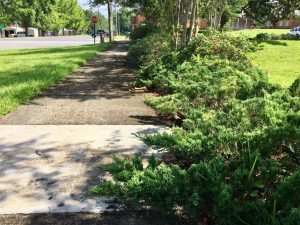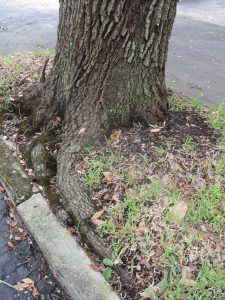A number of years ago, I had the opportunity to speak at the International Flower and Garden Festival at Epcot in Orlando. I provided eight presentations on the topic “Right Plant, Right Place.”
The audiences consisted of people mostly from Florida but there were attendees from other parts of the U.S. and even from other countries. I started each presentation with the question, “Do any of you have all the right plants in all the right places in your landscape?” Not a single hand was raised in response to this question.
Most people do not have all the right plants in all the right places in their landscapes, including myself. Hopefully, no one is on the other extreme of having all the wrong plants in all the wrong places, either.
Most people fall somewhere in between these two extremes. As a Florida gardener, you’d be wise to better implement this idea into your landscape.
Right plant, right place does require some knowledge of your property’s site conditions and knowledge of plants to be used on the site. The main idea is to best match the plants to the existing site conditions.
How often do we place shade loving plants in full sun or poor salt tolerant plants along the coast or plants that are native to wet areas such as wax myrtles on deep sandy, dry sites? These misplaced plants will not be “happy” and eventually will have problems.
How often do we take a plant in a gallon size container, plant it under a low window and expect it to stay the same size? Or, what about the sixty-foot tree under a twenty-foot power line. Plants are designed to grow.
Find out the mature size, in height and width, and place the plant where it has plenty of room to develop into its mature size.
Right plant, right place involves choosing plants that will standup to our wind, climate, humidity, heat, rain, winter weather, etc. Certain plants such as tulip and lilac don’t perform well here because of the lack of sufficient cold weather and the fact that it becomes too hot too early. But we can grow other flowering bulbs such as amaryllis and other flowering shrubs and trees such as crape myrtle and chaste tree.
With some planning and forethought in selecting and placing plants, your Florida landscape can be aesthetically pleasing, easier to maintain and more Florida-friendly.
For additional information on selecting the right plants for your landscape, contact the UF/IFAS Extension Office in your county or visit the below website https://ffl.ifas.ufl.edu.
- Nuisance Gnats abound in Northwest Florida this spring - June 26, 2025
- Watering to Establish a New Lawn - May 15, 2025
- Sweet Onion and Strawberry Success, a Matter of Variety and Timing - April 10, 2025


